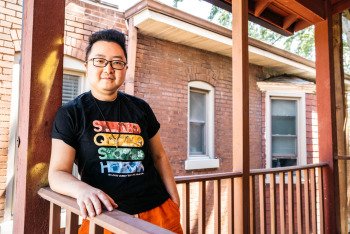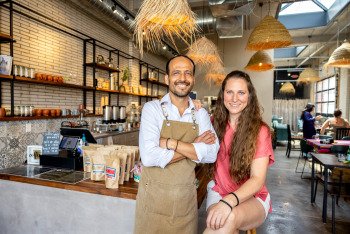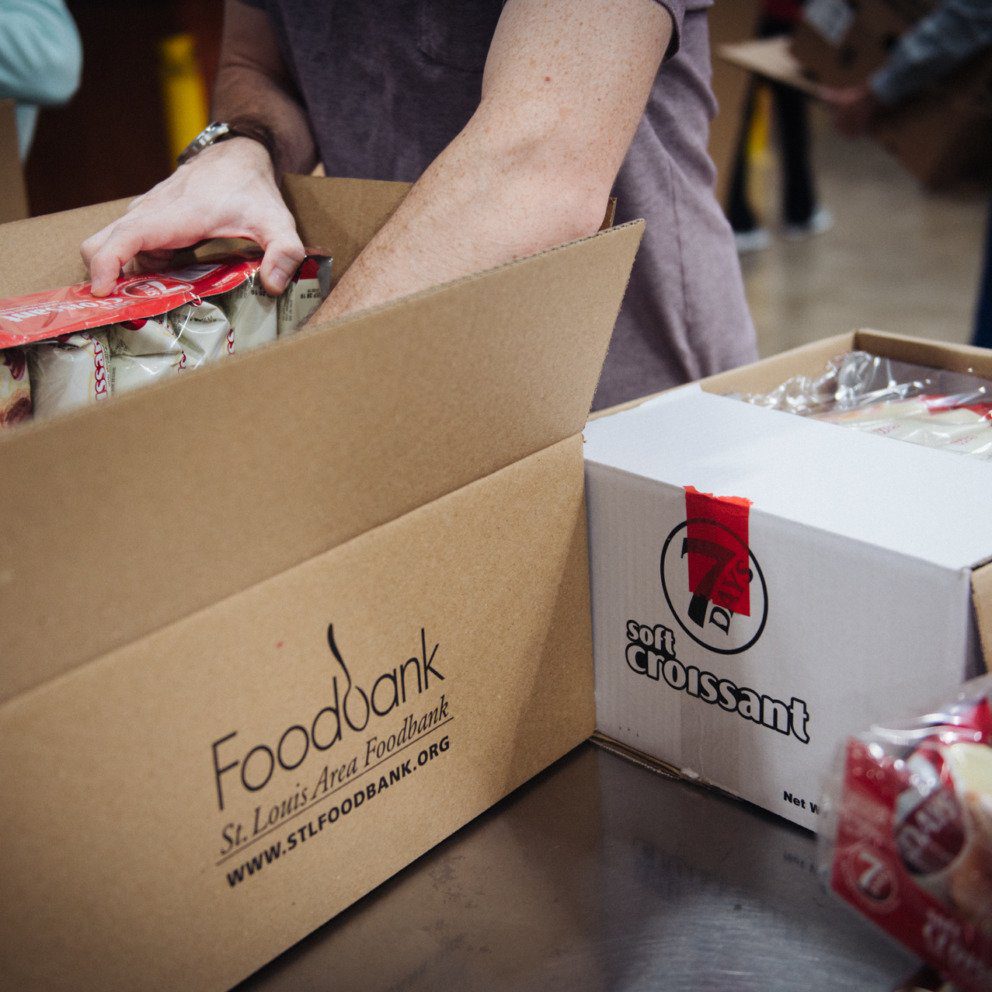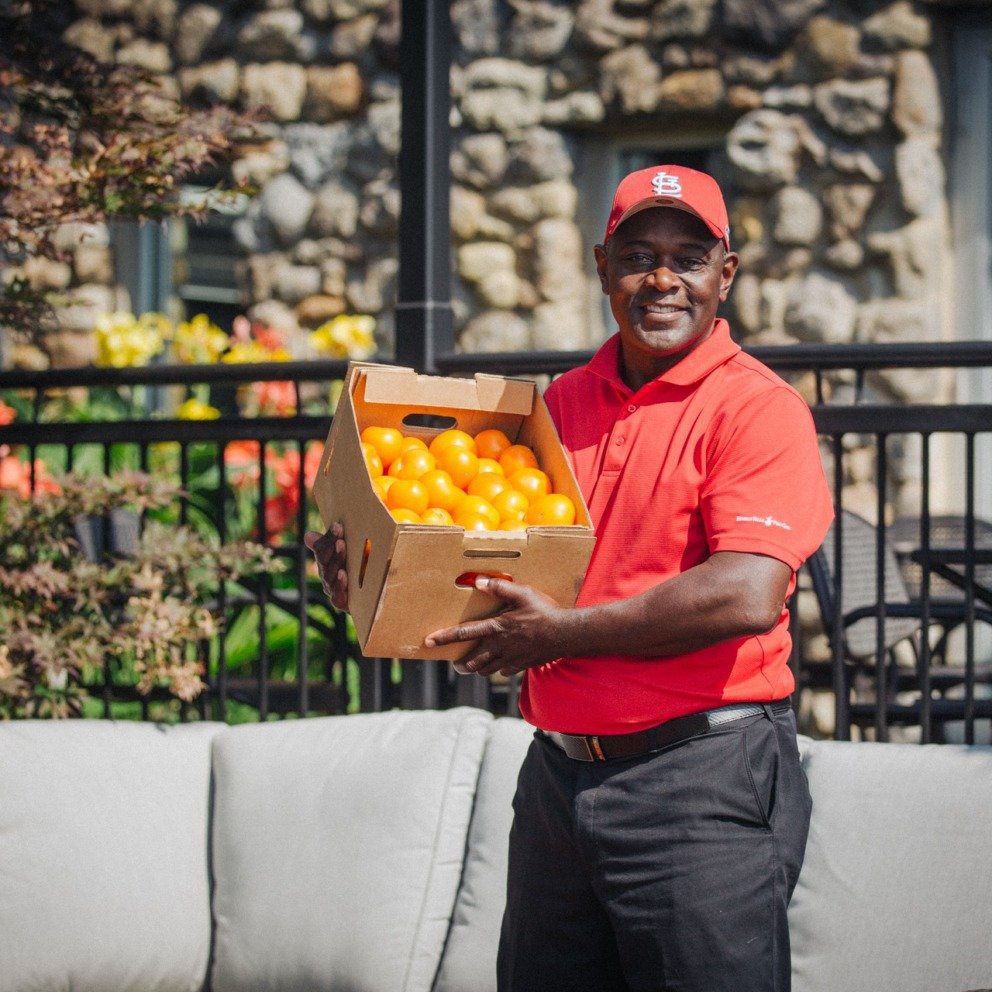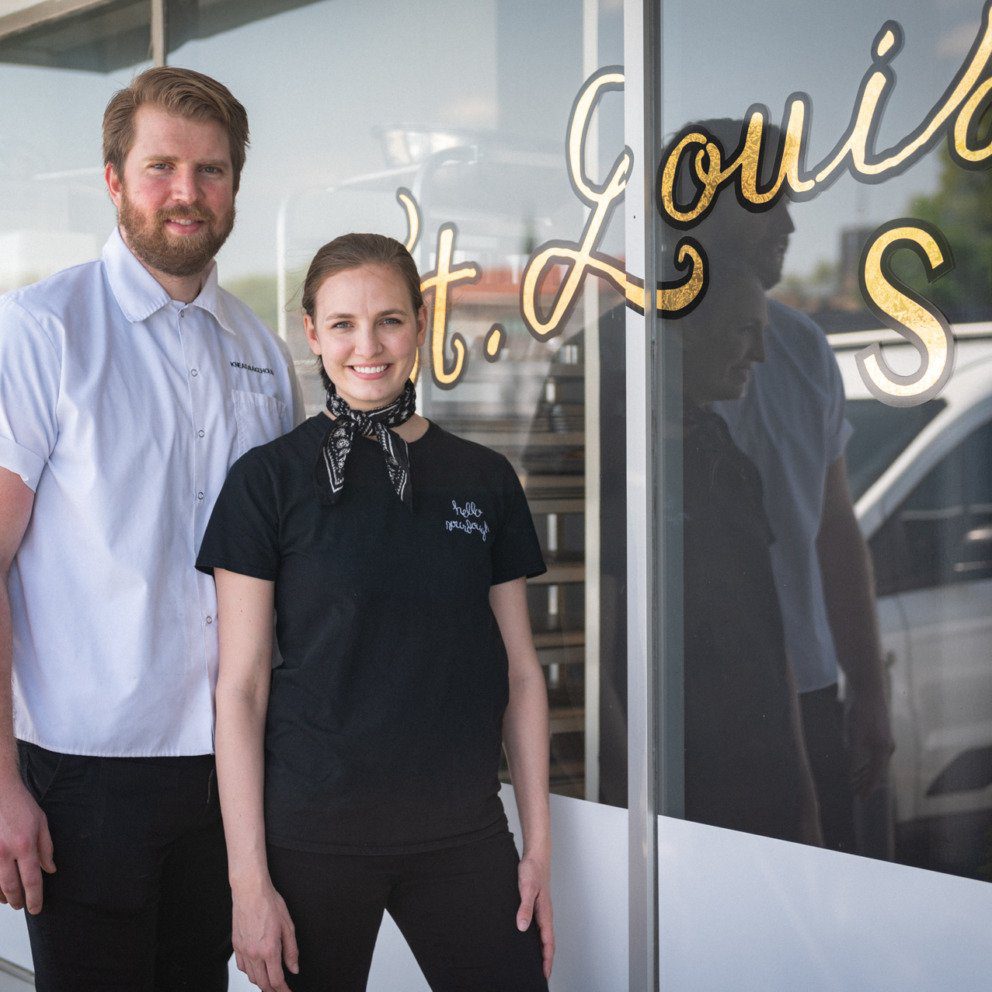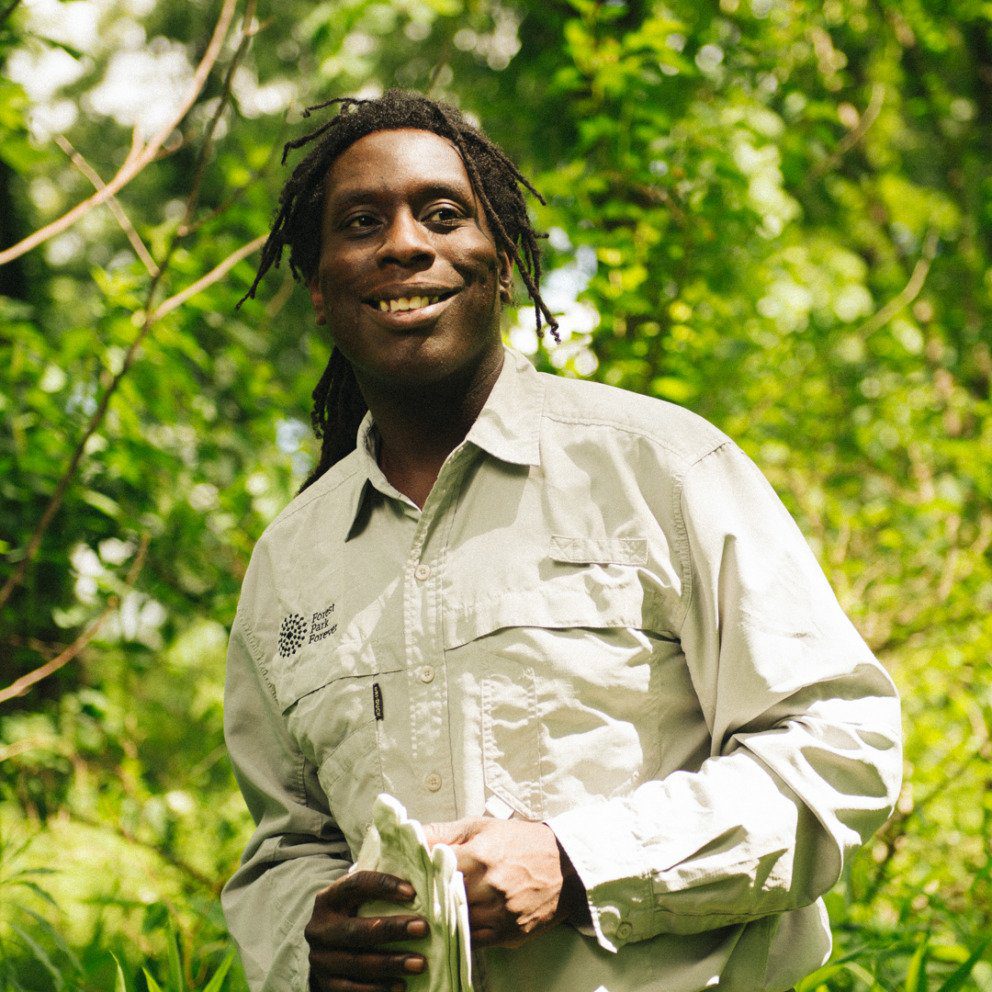Bridging the Gap
The Foodshed.io app links small family farms to grocery stores so consumers can buy more local produce and farmers can do what they do best: grow food.
Adrienne Hunter-Green does not mince words when she describes how difficult it is for her to get the produce from her New Madrid farm to the consumer.
“It’s brutal,” Hunter-Green says. “The work that it takes to get the produce to market – it’s challenging, hard and it’s brutal. When you finally see it on the truck ready to go, that’s what makes it fulfilling.”
Like all farmers, Hunter-Green lives in a world filled with challenges and unknowns. There’s the weather that can devastate an entire growing season with one bad storm; price fluctuations; and geopolitical factors, such as tariffs and trade conflicts, that make their livelihoods uncertain.
However, as Hunter-Green’s comments make clear, even something as seemingly simple as getting produce from the field to a family’s dinner table can actually be an arduous process. Much more than harvesting a crop and putting it on a truck, the logistics for getting food from the field and into a grocery store’s produce bins involves a complex arrangement between farmers and stores that starts roughly a year in advance and requires commitments to growing certain crops, with no guarantees that they will be purchased when they are ready to be harvested.
Adding another layer of complexity are yield requirements that are difficult for a small family farm to guarantee, leaving those farmers in a situation that makes their jobs not only difficult, but uncertain.
Dan Beckmann and Clare Sullivan recognized these problems when they met as students at Washington University in the late 1990s, and continued to discuss them even after they graduated and went to work in different fields. In 2017, they found themselves in New York and decided to finally tackle the problem, founding Foodshed.io as a way to build a bridge between local farmers and retailers. The company is based on the premise that, though small farmers want to get food to market, and grocery stores want to sell local produce to consumers who demand it, there are major inefficiencies in the local food distribution system creating barriers that prevent this from happening. Their solution is a technical one: Through an app, Foodshed.io connects farmers to grocery stores, bundling their goods to meet volumes the retailers need, but that individual farms cannot produce alone.
“Regional retailers want to source locally, but Dan and Clare saw a lot of inefficiencies,” explains Rachel Wilson, head of farm outreach for Foodshed.io. “With co-ops, communications involve telephone calls, paper receipts and really inefficient systems. Foodshed wants to streamline the relationship between farmer and buyer. The need they saw was to be able to work with small and medium-sized farms that wanted to sell locally but couldn’t meet the volumes.”
Foodshed.io relocated to St. Louis from New York last year when it participated in Yield Lab, a local agribusiness accelerator that is one of the many players working to mark the region’s presence in the international ag tech scene. One of the major leaps Foodshed.io has taken since relocating and participating in Yield Lab is a partnership formed this year with St. Louis-based Schnuck Markets, Inc. to beta test the app. By partnering with the region’s largest grocery chain, Foodshed.io can perfect its platform with an eye to expansion – something Mike Tipton, vice president of produce for Schnucks, thinks can’t happen soon enough.
“At Schnucks, we’ve had a good presence in local, but not as great as we want to be,” Tipton says. “It’s hard for a produce buyer to put forth all the effort to make a local program come together. It requires a lot of attention and there are a lot of gaps. In talking with Foodshed and learning about their platform, we see how they can help us work with farmers and accomplish two goals: To bring in new items we are missing, and to create a pipeline to get us through the season. It helps us be the best we can be for our customers by bringing in the most local produce in to our stores.”
As Wilson explains, Foodshed.io should be thought of as building a bridge between farmers and grocery stores – one that involves more than simply putting food on a truck and sending it to market. The organization facilitates communication between grocers and producers by letting growers know how much a store will need well in advance of the growing season, then providing guarantees that the stores will actually take the amount requested when the time comes. Foodshed.io also helps farmers with packaging, branding and digital media so they can focus on what they do best: growing food.
“It’s removed barriers because we don’t have to worry about getting our food to market,” Hunter-Green says. “Granted, this year has been very interesting for everyone and has presented a lot of challenges, but even though life has presented new barriers, Foodshed has removed others.”
Hunter-Green is, of course, referring to the COVID-19 pandemic that has upended every facet of life, including agriculture. However, as Foodshed.io’s main goal is to get more local produce into the hands of consumers, it is positioned to address many food-related concerns brought up by the virus, including the fact that local food simply touches less hands than produce coming in from across the country – one of the many things consumers don’t often consider when they are walking up and down the produce aisles.
“Consumers are fooled by having produce always on the shelves,” Tipton says. “It’s just expected to be there, but they don’t understand what it takes. It’s not like a can of green beans that can be stored on a shelf for six or eight months. It involves a lot of planning, and everything has to work out perfectly. There is a lot more to buying local than picking up the phone and buying some corn.”
If Foodshed.io has its way, though, the process for getting produce from farm to table will be that simple – a win-win for consumers, retailers and producers and a way to guarantee that small farms live on.
“For the next generation, it’s very challenging for them to see your vision,” Hunter-Green says. “I tell people I am living my grandparents’ vision – they were farmers – but the next generation isn’t really feeling that vision. I have three daughters, and I’ve captured my youngest’s attention, but I had to do it in a creative fashion. If I can get that vision with her, I will continue. If it wasn’t for staying engaged and being involved with Foodshed, this vision would not have been lit, so I am excited.”
Join the Story
Learn more about local family farms partnering with Schnucks Markets through Foodshed.io here.


